Enhanced Flexibility: Users can now look beyond a single dashboard, allowing them to organize and view data in a way that suits their preferences.
Time Savings: The ability to clone dashboards simplifies the process of creating new dashboards, saving time and effort for users who need similar configurations.
Granular Control: Custom permissions ensure data sharing selectively, with users controlling who sees specific dashboards.
Organized Insights: The option to delete dashboards and pin favorites enables users to maintain a clutter-free and organized dashboard environment.
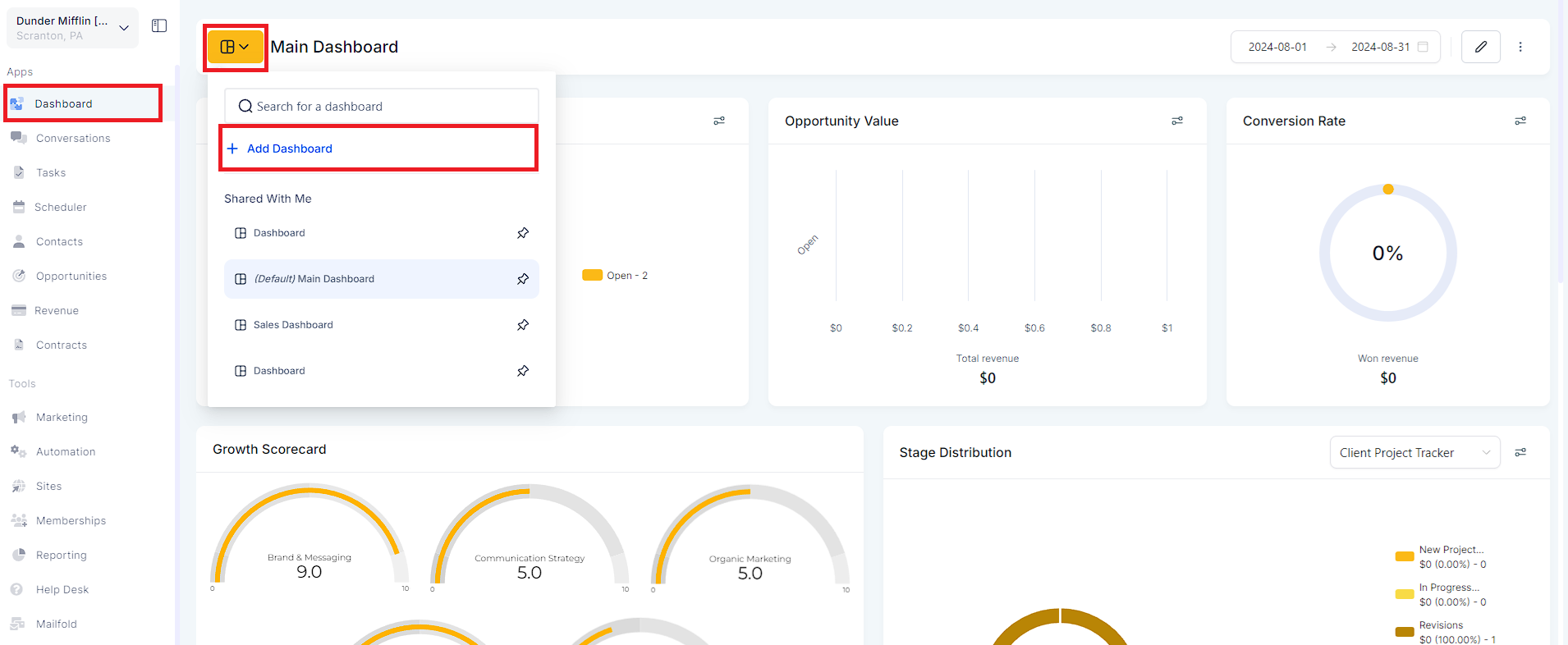
Users can create new dashboards to curate data and insights according to their specific needs. This functionality is available to users on the $497 and higher plans.
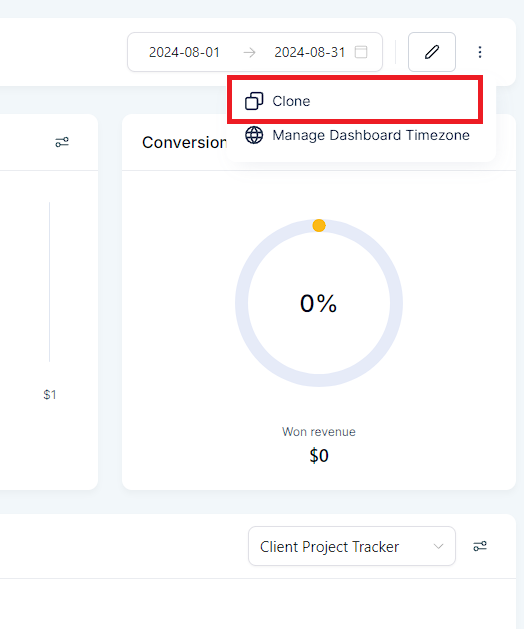
With this feature, users can duplicate existing dashboards, reducing repetitive setup and streamlining quick changes. Both users with Full and View-only access can clone an existing dashboard.
Dashboard owners and users with FULL access can manage permissions for different roles. In addition, dashboards can also be set to be Private Dashboards, so that other members of the team cannot see them.
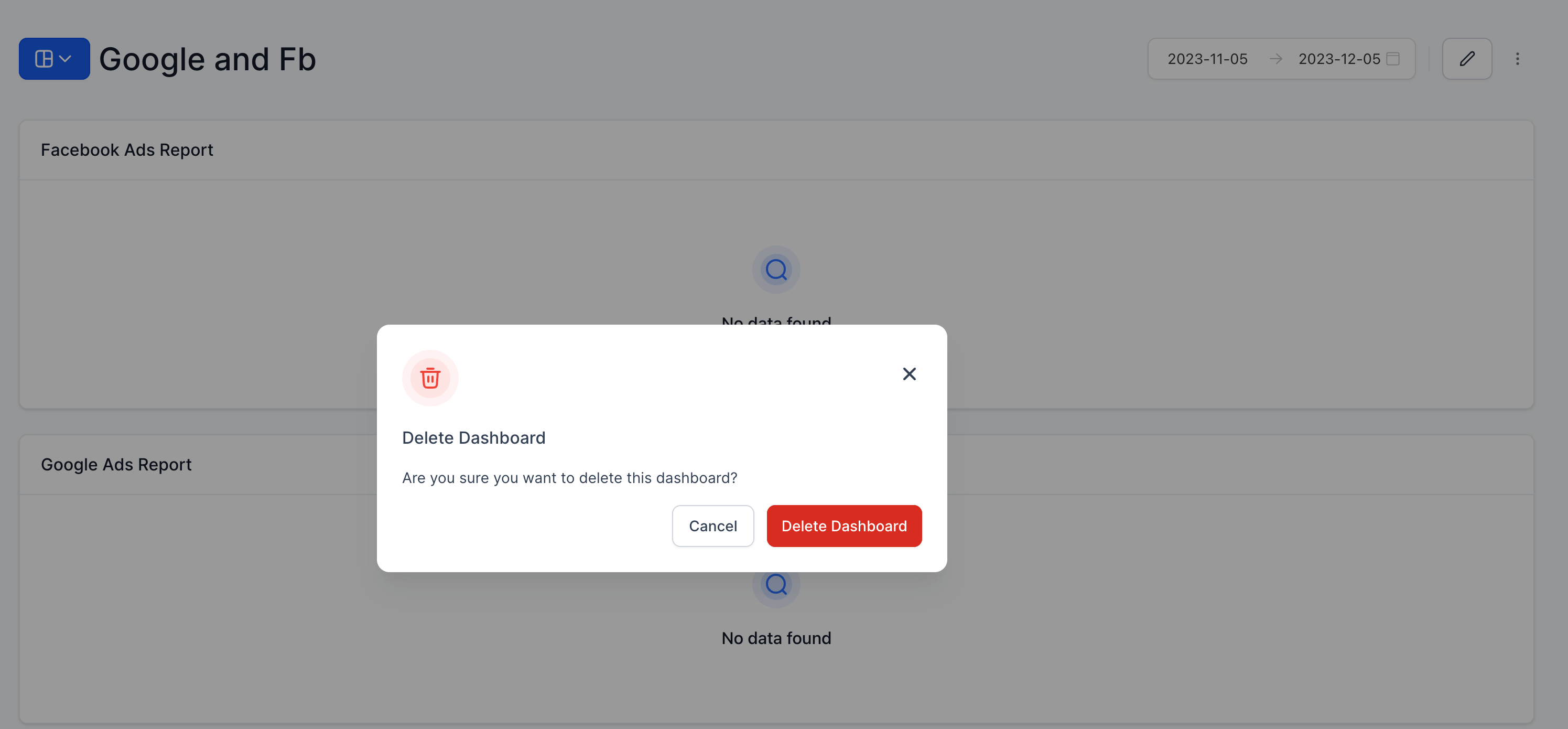
Dashboard Owners can remove dashboards they no longer need, decluttering their workspace.
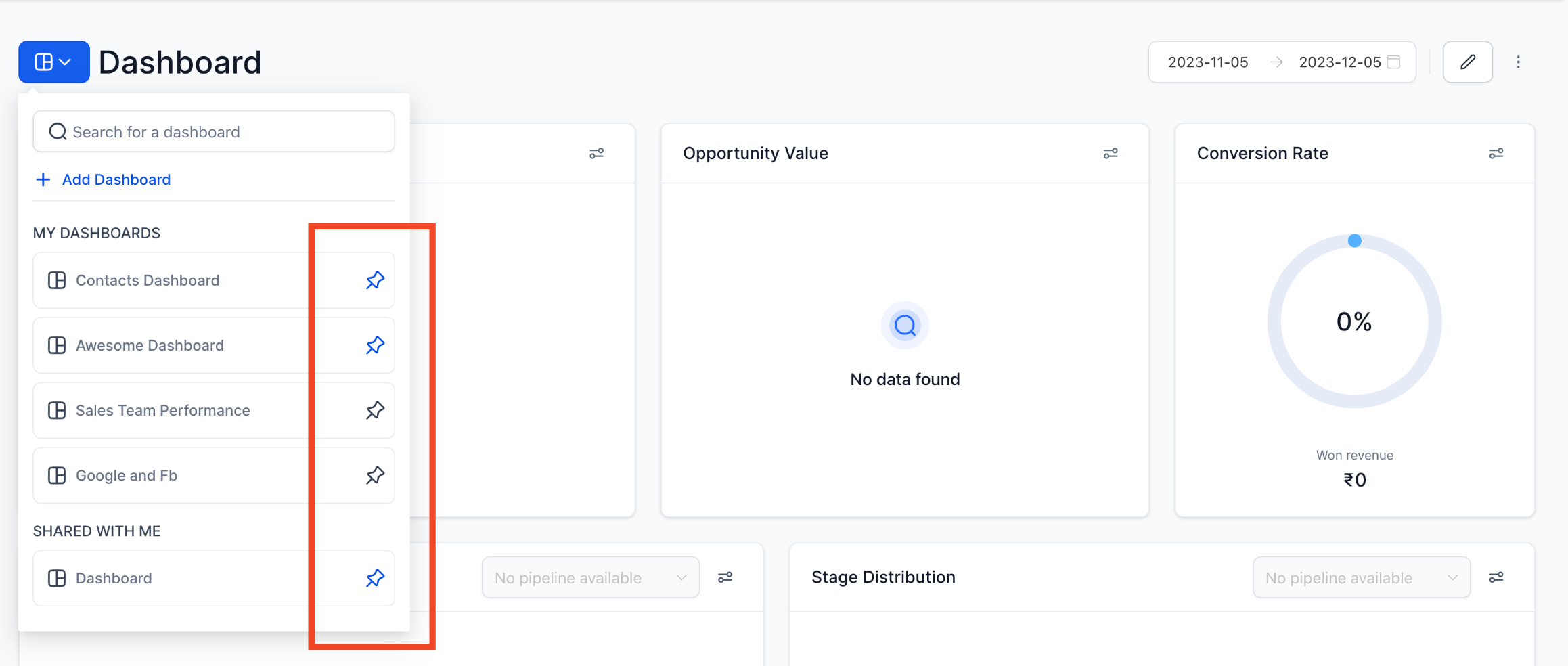
Users can prioritize important dashboards by pinning them for quick and easy access.
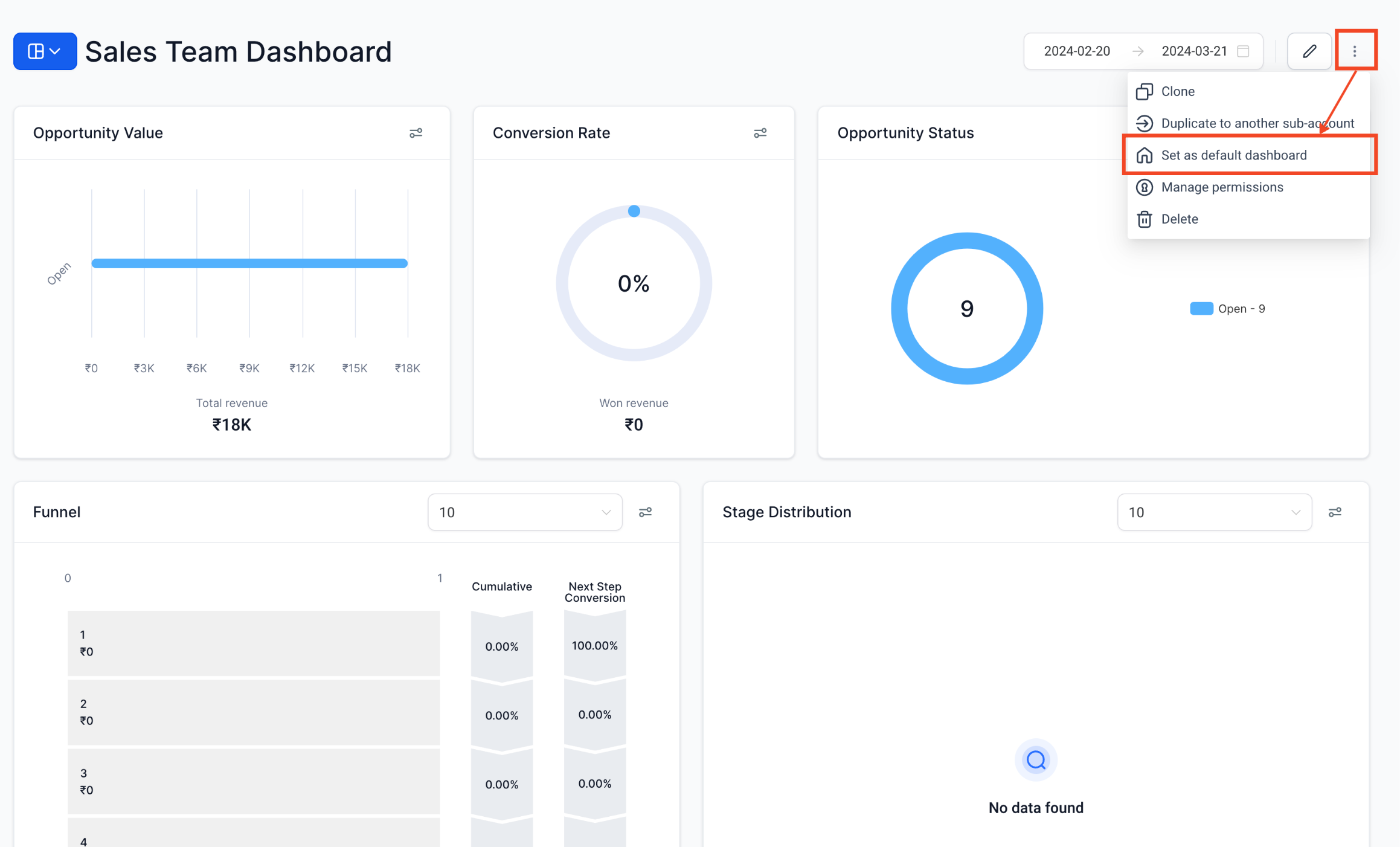
By setting a Default Dashboard, users can ensure that the most critical information is at their fingertips without any hassle. A default dashboard is the main landing page for all users, while a pinned dashboard is a favorite dashboard that can be easily accessed by an individual.
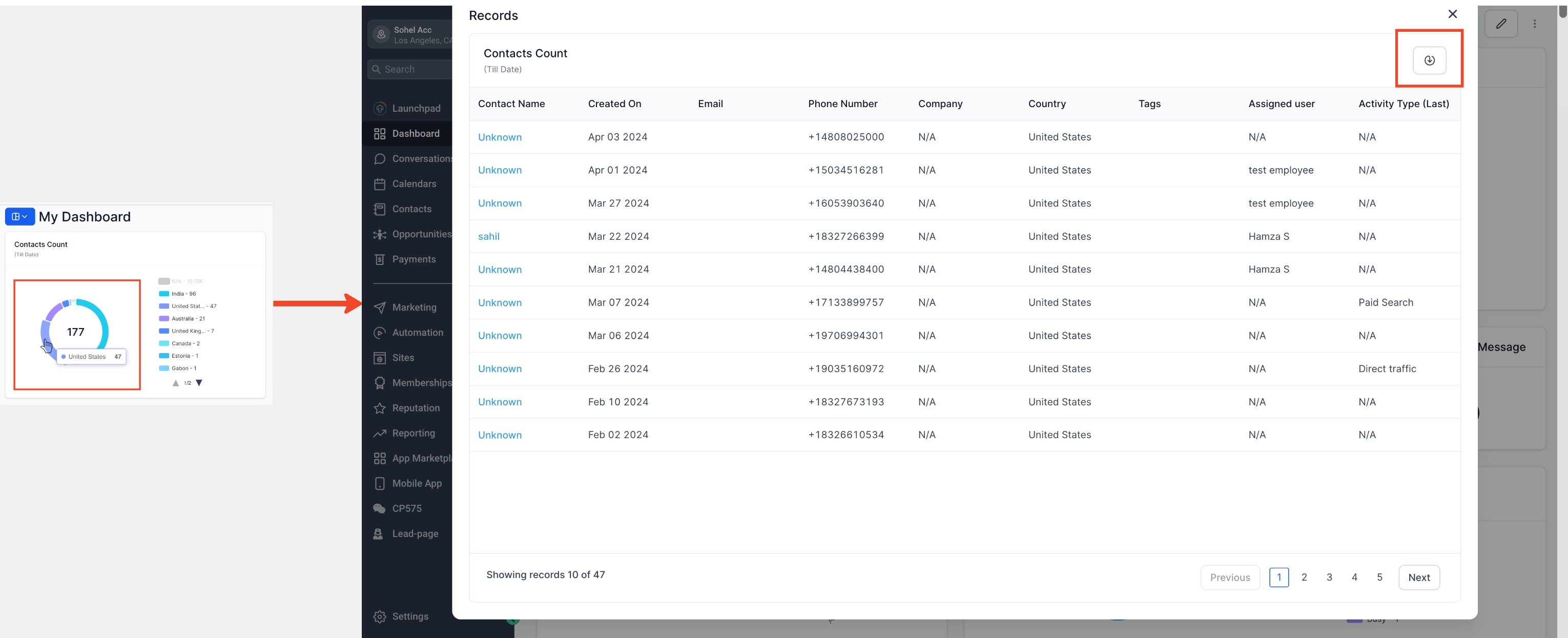
Users can view records and granular details for all charts and widgets by clicking on any component. You can unlock a treasure trove of information by selecting a node on a line graph or a bar on a bar graph. By clicking on the export icon in the record view pop-up, you can also download the records.
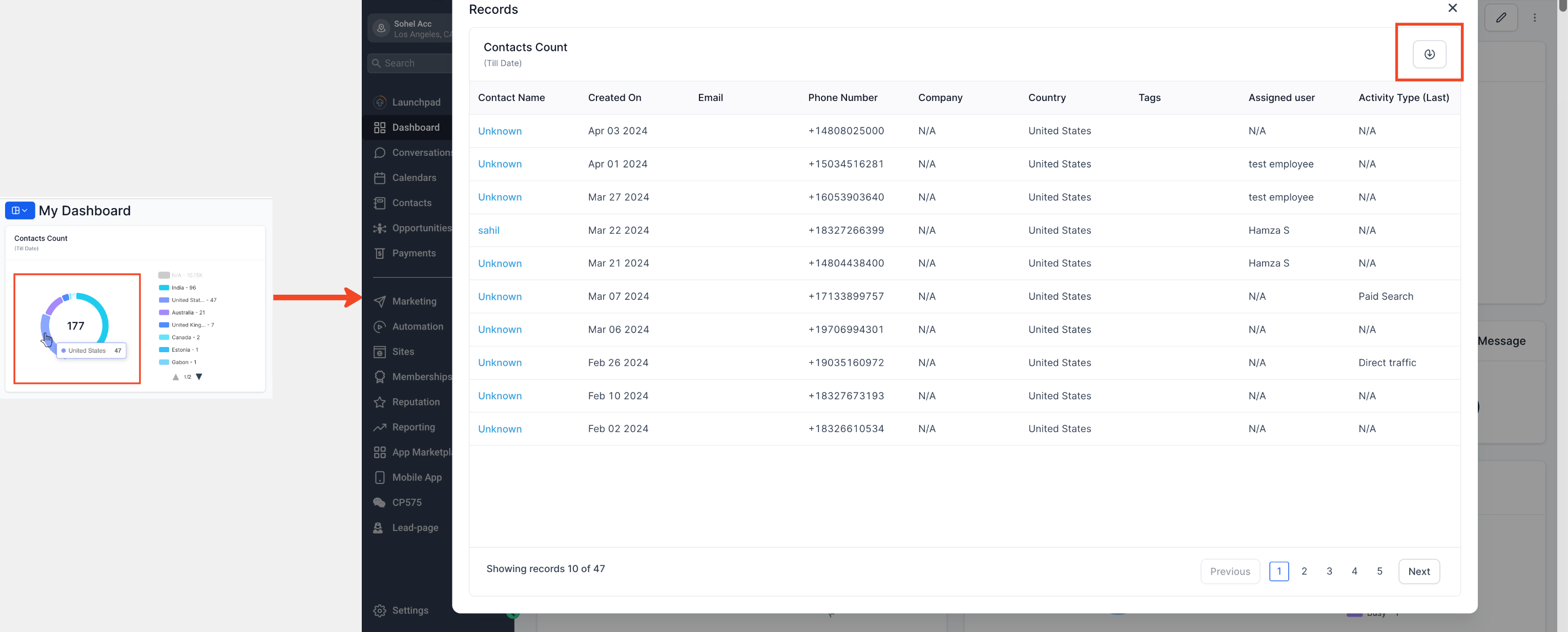
The records can be downloaded by clicking on the export icon on the record view pop up for widgets. For Table widgets the export icon is present on the widget.
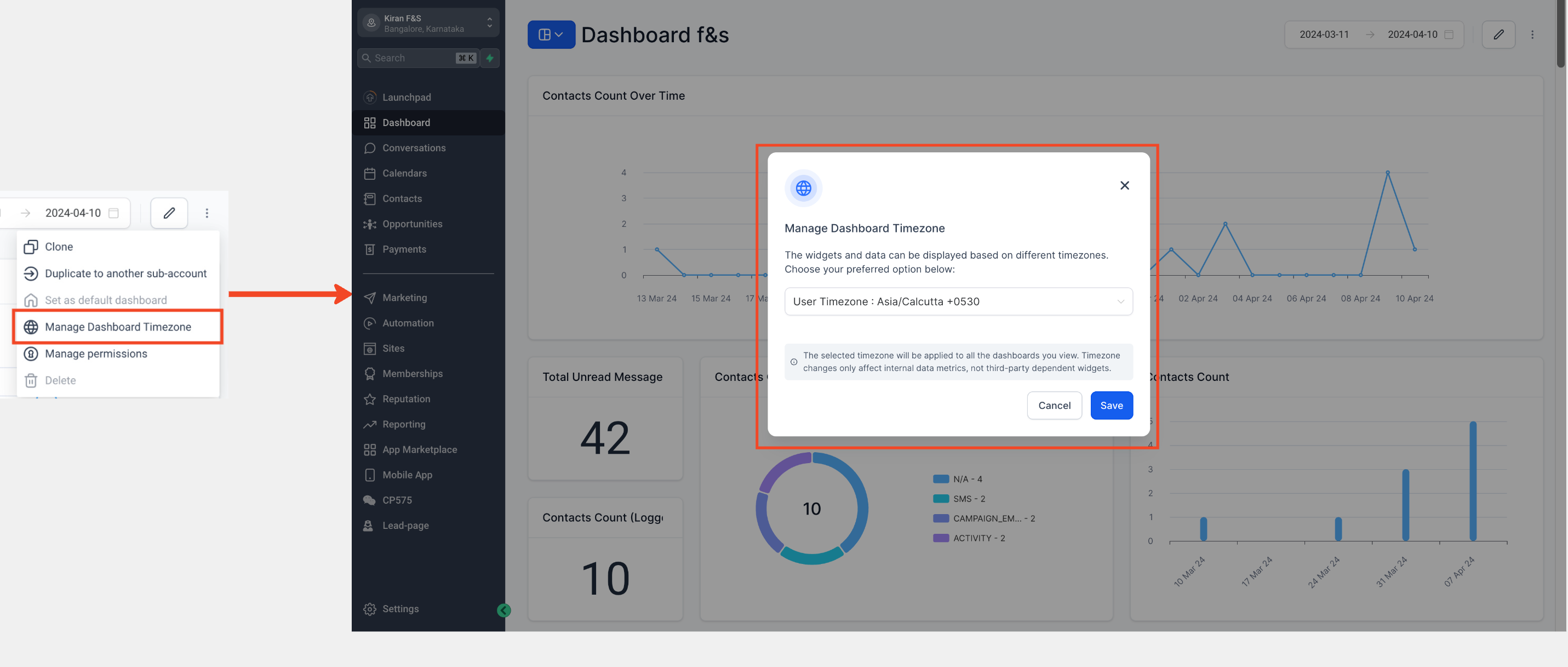
Previously, different time zones caused data mismatches between dashboard widgets and other platform modules. It enhances efficiency and accuracy by seamlessly synchronizing dashboard data with local time. Users can optimize their data analysis with this feature.